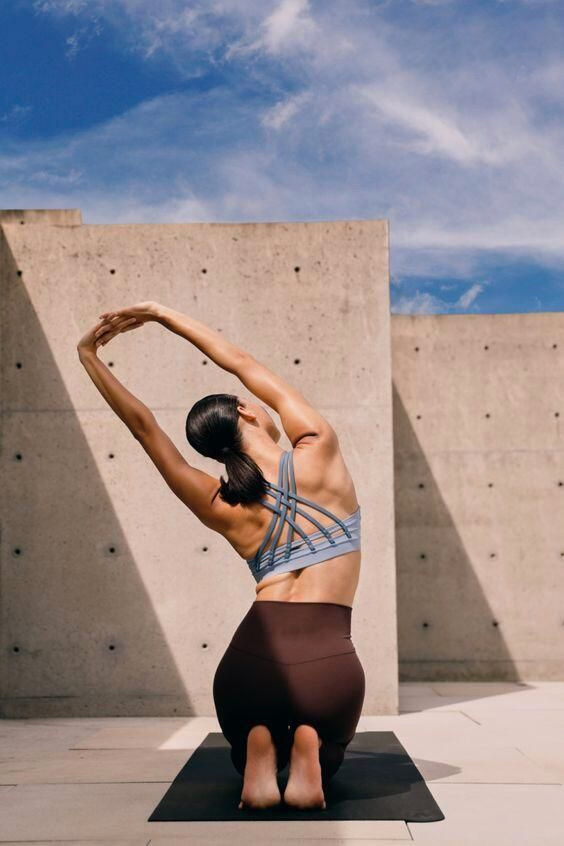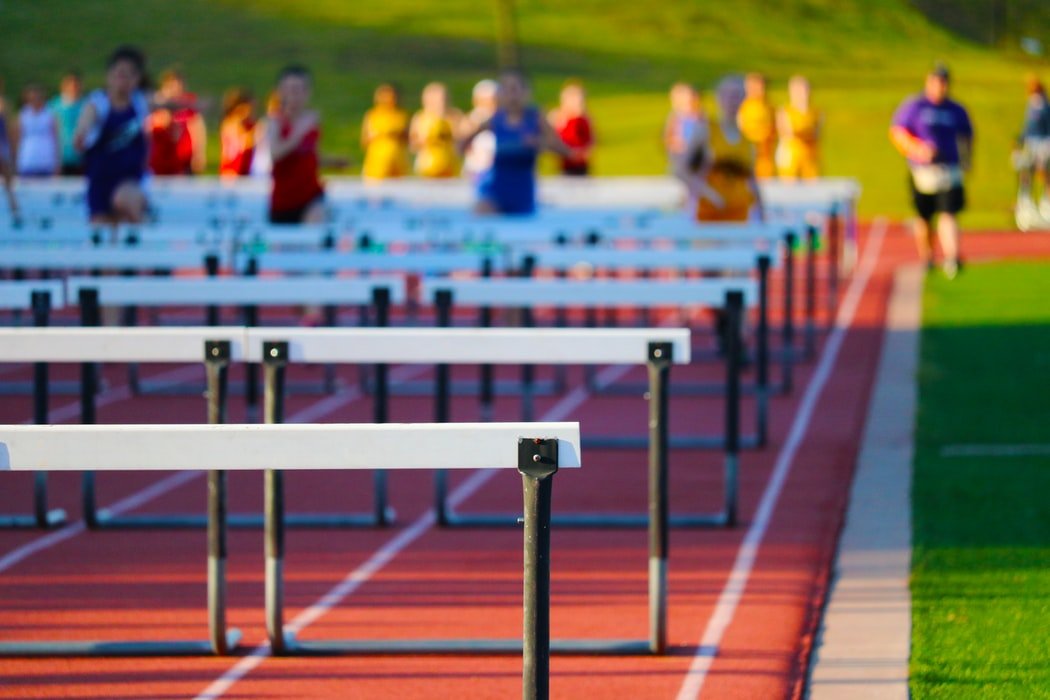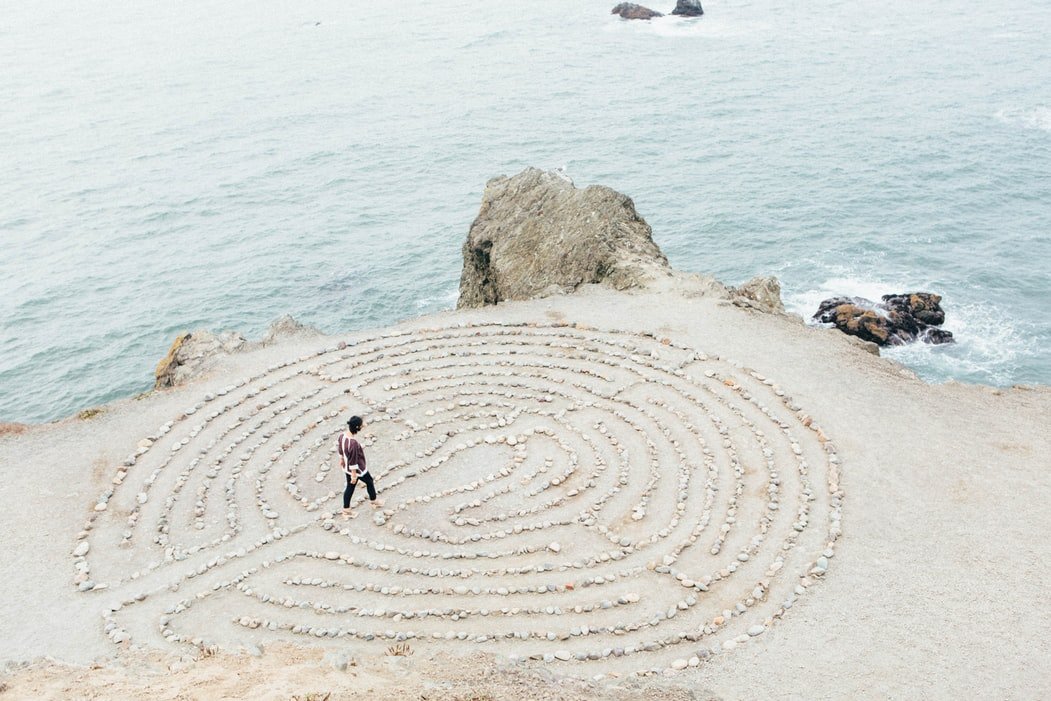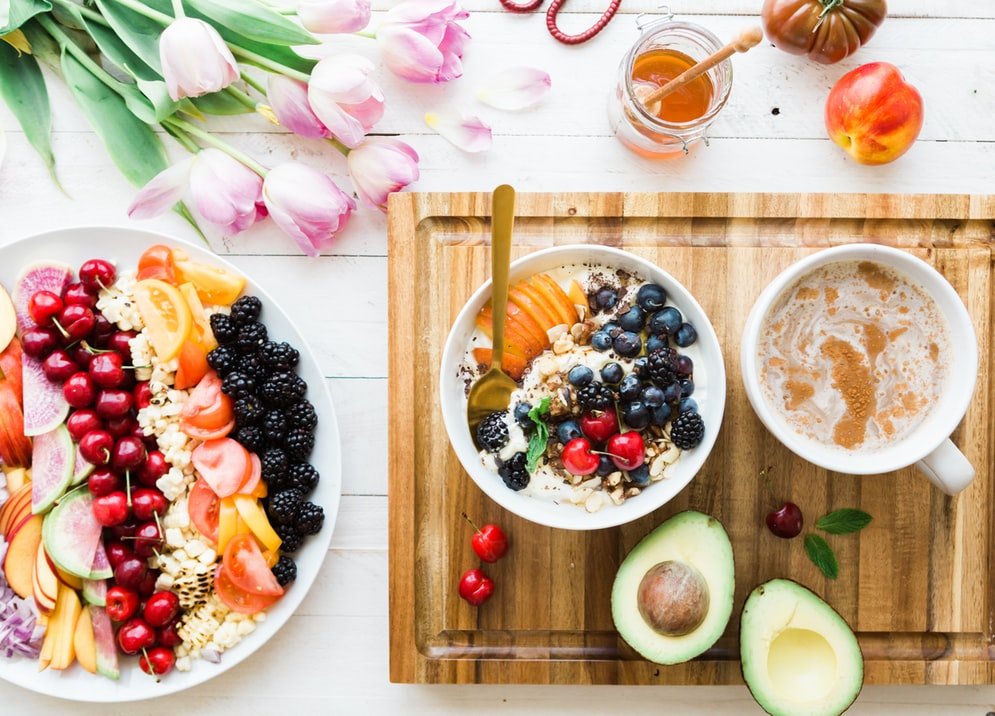How to Transform Your Body the NEAT Way
Unlock your potential and subscribe today
Learn how we can help you to harness the power of NEAT to transform your body
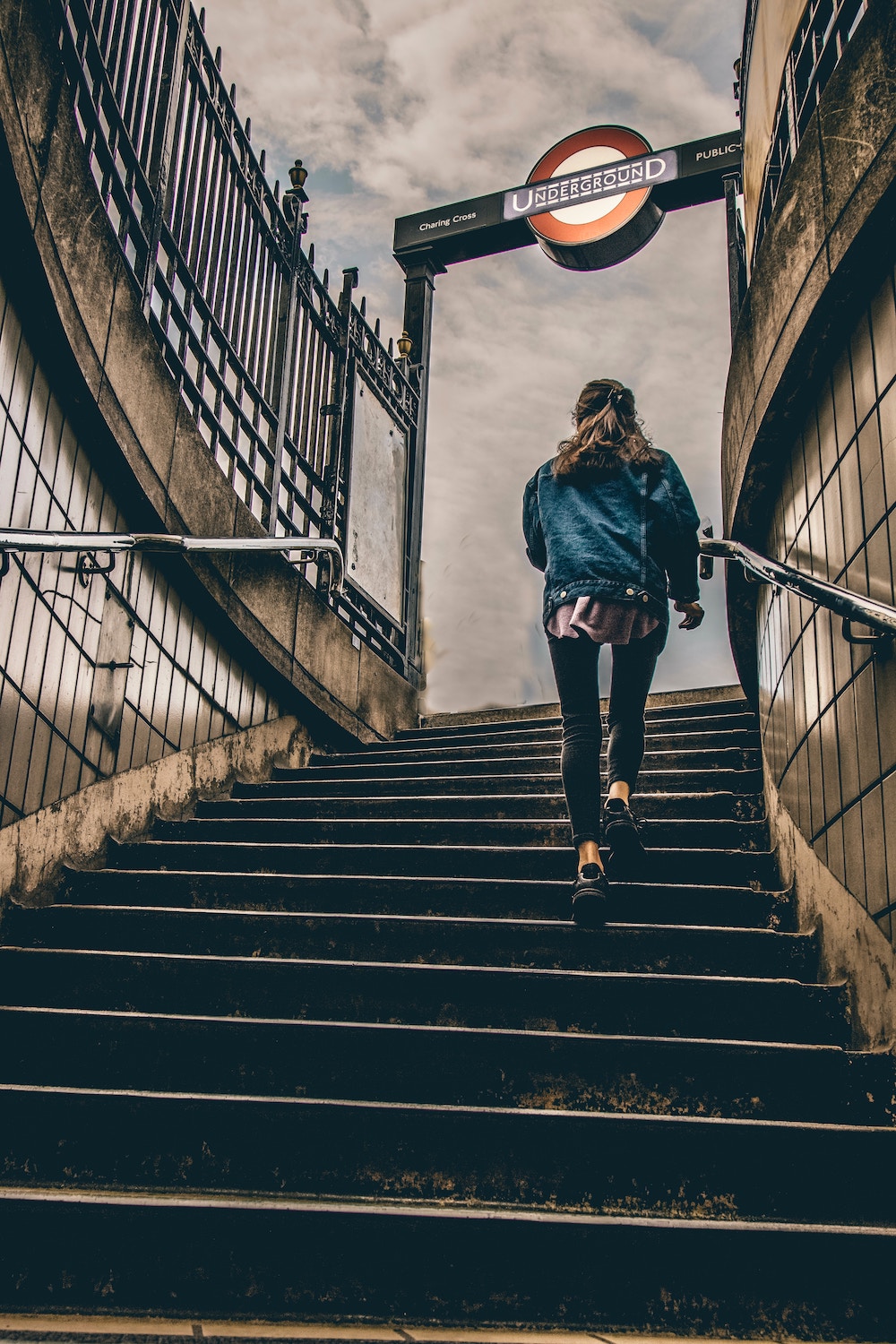
Crash diets are demanding on your body. The combination of severe calorie restriction and intense exercise regimes is a recipe for disaster as, without the necessary energy supplies, crash diets can leave you feeling deflated, worn down and burnt out. But perhaps the worst part of crash dieting is — it just doesn’t work. For all the days spent with low-energy, frustration and hunger pangs results quickly fade, setting you right back to square one. Are we missing a piece of the weight loss puzzle?
Put simply — yes. Crash diets are at best a short-term answer that delivers unsustainable results and are at worst, dangerous. Although our bodies need to be in a calorie deficit to lose weight, it’s not as clear cut as working out in the gym for an hour, eating minuscule portions and then crashing out on the bed, waiting for our dream body to reveal itself — the science of weight loss is a little more nuanced! After all, the human body is mind-boggling complex, so simple equations are never quite going to cut it.
Our Method does things differently. Unlike crash diets that focus on short-term results and extreme methods, ours is a holistic approach backed by science and certified experts and delivering consistent body transformation results. Our carefully calibrated four pillar method is designed to take into consideration the complex ways in which our bodies function, and works to optimise both your time and your body’s natural processes.
In this blog, we’re turning our attention to NEAT — or Non-Exercise Activity Thermogenesis. NEAT refers to the number of calories burned by moving and living day-to-day. It makes up a huge part of the weight loss equation so understanding how NEAT works and learning how to increase it, is integral to getting the body transformation that you always dreamed of.
How Your Body Burns Calories
We all know that metabolism influences weight loss. But exactly how does metabolism work? And how much can we influence it?
Put very simply, your metabolism is the rate at which you burn energy. In other words, it is the rate at which you burn calories — which are basically just units of energy. When you’re engaged in periods of higher activity, your body burns more calories and your metabolism fires up. But that’s not the full picture. Your body is always using energy — even when you’re resting.
The rate at which you burn energy and expend calories is called your Total Daily Energy Expenditure (TDEE). TDEE subdivides into four categories.
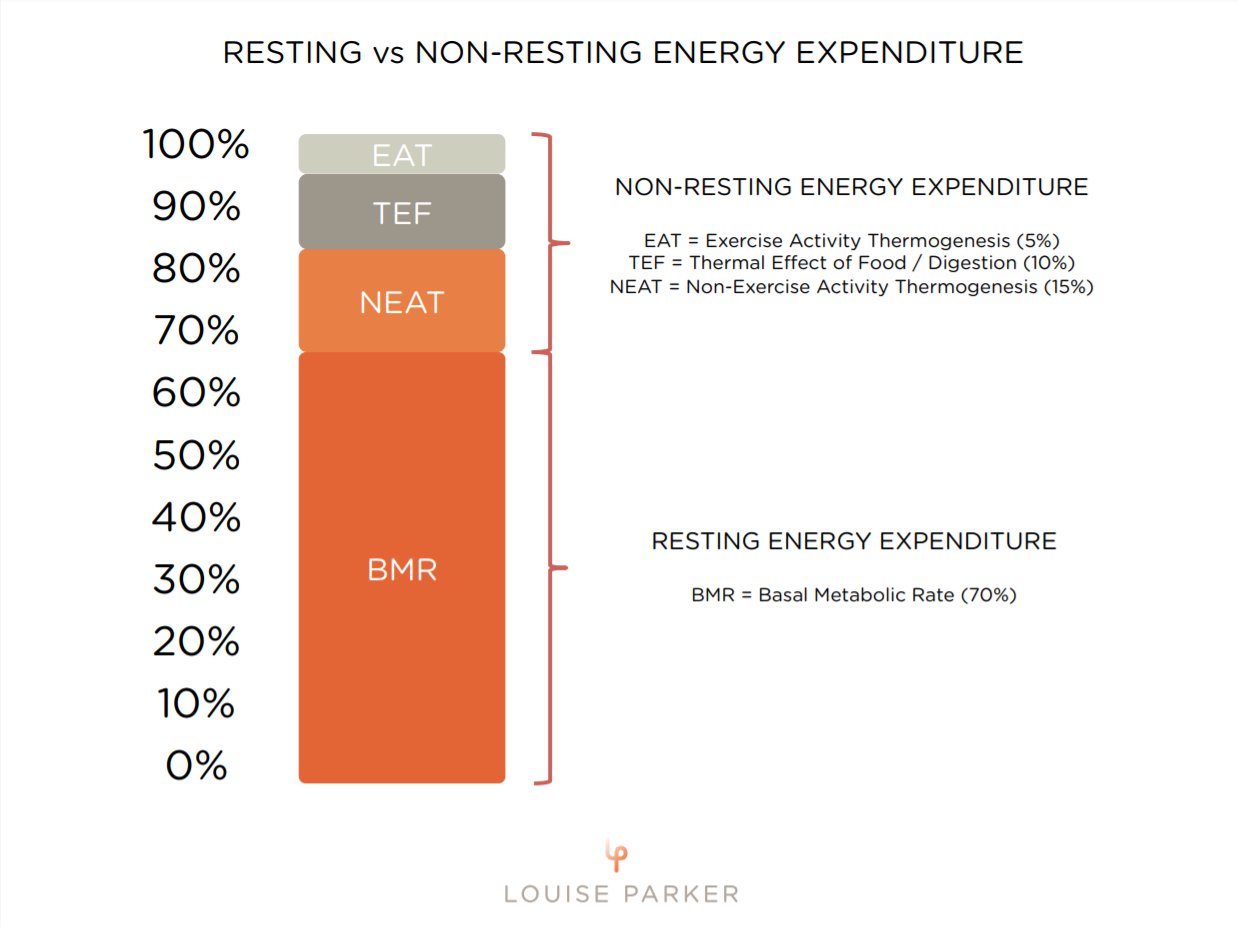
Basal Metabolic Rate / Regular Body Functions
Your Basal Metabolic Rate (BMR) is the amount of energy your body uses to exist and is what your body uses to support the functionality of your organs and physiological systems such as your liver, brain and skeletal system. In fact, your brain uses about one-fifth of your BMR — about 60-75% of your TDEE.
Although you can boost your Basal Metabolic Rate by building muscle mass, your BMR is also influenced by genetic factors, your age, gender and overall health.
The Thermic Effect of Food
The Thermic Effect of Food (TEF) describes the calorie cost of digesting food and converting it into more energy — or storing it as fat. You may be surprised to learn that eating can burn calories and TEF actually takes up roughly 10% of your daily energy expenditure. And when it comes to TEF, protein is king. Not only do the complex structures of protein increase your energy throughout the day and help you feel satiated for longer, but it also takes more energy to digest and so boosts your TEF.
It’s why we aim for protein in every meal and snack in the method. The other macro-nutritients are also play key roles which is why we aim for a balance nutrient profile overall and not high protein.
The Thermic Effect of Physical Activity/ Moving & Exercising
The Thermic Effect of Physical Activity (TEPA) makes up the rest of your TDEE and is the amount of energy used to move and engage with physical activity. But the important thing here is that there are two different types:
Exercise Activity Thermogenesis (EAT)
Exercise Activity Thermogenesis is energy expended during intentional exercises — such as a gym workout, a brisk run or a swimming session — or any form of intentional “exercising.”
Most people will opt to boost their EAT when trying to lose weight because our body burns through a lot of calories as it tries to bring us back to a normal state after completing an exercise regime. Exercise also increases muscle mass and so boosts our metabolism — which helps us to burn through calories even when resting.
We favour resistance based exercise as this is the most effective way to build lean tissue and tone. After resistance exercise, your body is repairing the muscle fibres which have been broken down and rebuilding them (boosting muscle tone). This uses energy and is called the afterburn effect. Afterburn can last up to 24 hours after exercise meaning you get more benefit than just the effort your expend in the session itself.
Non-Exercise Activity Thermogenesis (NEAT)
Non-Exercise Activity Thermogenesis (NEAT) refers to the number of calories burned by our bodies when we’re moving within our normal life — walking, tidying up, moving between platforms on the commute to work. All of these activities burn calories and can play a huge role in your body transformation.
How to Increase Non-Exercise Activity Thermogenesis (NEAT)
Gyms can be intimidating. Unfamiliar machines, gym bunnies, sterile lighting. If you’re starting a body transformation, heading into a gym can be a daunting prospect. More than a few of our clients have put off their workouts with the fear that they’ll embarrassing themselves in the gym. For many more, the problem is getting to the gym in the first place. Amidst family life, work obligations, and daily tasks — finding time to squeeze in a workout at the gym can be tricky.
But a sweaty gym session or workout isn’t the only way to burn calories. In fact, you can burn over 2,000 calories without even realising it. The “neat” thing about NEAT is that you don’t need any special clothes or equipment and you don’t have to find space for it in your busy schedule — it’s completely free, easy, and intuitive. And while NEAT doesn’t replace exercise, when used in combination with beautiful food and intelligent workouts, it can really make a difference.
Here’re just some of the ways you can weave NEAT into your every day.
Walk as Often as You Can
Walking is having a bit of a fitness moment thanks to the 10,000 steps trend and the rise of fitness technology and pedometers that make counting steps easier than ever. And that’s a great thing because walking is a free and easy way to burn calories, improve heart health and build stamina. But how many steps should a person take in a day? Or rather, how many steps should you walk per day to lose weight?
Today, it’s all about the 10,000 steps, but you don’t have to track every step you take or force yourself to reach the number when you’re low on time. The number is a guideline rather than a hard-and-fast rule and is considered to be an achievable goal for daily physical activity, and an obvious way of boosting NEAT calorie burning. We don’t like the idea of setting too many rules and regulations, but 10,000 steps is a reasonable benchmark for the number of steps you should be taking each day to get that NEAT burn.
If you’re not at 10,000 steps don’t worry. Aim for progress and so if currently you take 2,000 steps, aim to boost it to 3,000 this week and take this from there. Progress is the goal.
Walking is easy to do — walk around the park in your lunch break, walk to work, walk the kids to school, get up and move around the office. Just little bursts of activity throughout the day can quickly clock up. Why not try some of the following?
- Jump off the bus one stop earlier than usual
- Take the stairs instead of the lift
- Park a little further away from the door
- Swap out short drives for walks
- Try ‘walk-and-talk’ meetings and take phone calls standing up
Stand up throughout the Day
A growing body of evidence shows that sitting still for too long can be bad for your health. Not only is sitting for long periods thought to slow the metabolism and reduce the body’s ability to regulate blood sugar, blood pressure, and break down fat but it’s even linked to obesity, cancer and Type 2 Diabetes.
Part of the reason that sitting for long periods is so bad for us is because of its relationship with Lipoprotein lipase. Lipoprotein lipase (LPL) is an enzyme that plays a critical role in converting fat into energy. When we remain sedentary for a long time, our levels of LPL drop, but when we stand and move a little, it can help to sustain LPL levels and burn fat. So stand up whenever you can.
If you work in an office and feel like you’re chained to your desk, commit to taking a standing break every thirty minutes, stretch your legs and loosen up before sitting back down.
Play with Your Kids
One of the most common obstacles cited by our clients who want to lose weight is that their busy family lives get in the way of exercise and weight loss regimes. When you have kids that need your attention, it can be extra challenging to find time to get to the gym or set out on that jog. We believe that your body transformation program should fit in with your life and that you shouldn’t have to choose between yourself and your family. Why not incorporate movement into your family quality time? After all, kids are bursting with energy.
Instead of watching a family film, get outside and get moving. Play catch, kick a ball around, engage in a high-adrenaline game of hide-and-seek — just move. Not only will playing with the kids boost your NEAT and help with your body transformation — it’s also an amazing way of connecting with your family.
Clean with Intention
Nobody likes chores. However “Monica-from-friends” your cleaning habits, people call cleaning the house a “chore” for a reason. So why not use your cleaning duties as an opportunity to boost your NEAT? Dusting with vigour, dancing around with the hoover, or plumping the cushions with gusto are all great ways of burning some extra calories while getting mundane things done — it’s a win/win!
The Louise Parker method is unlike crash diets which compromise your muscle mass and focus on quick results and unsustainable measures. Our method understands that your metabolic rate is one of the most important aspects of getting and staying lean and healthy — so we’re committed to preserving muscle mass and boosting your TDEE.
To find out more about how the Louise Parker team can help you to harness the power of NEAT to transform your body, contact us today.
& More
Receive 10 free recipes to your inbox!
Sign up and we will send you 10 free recipes


